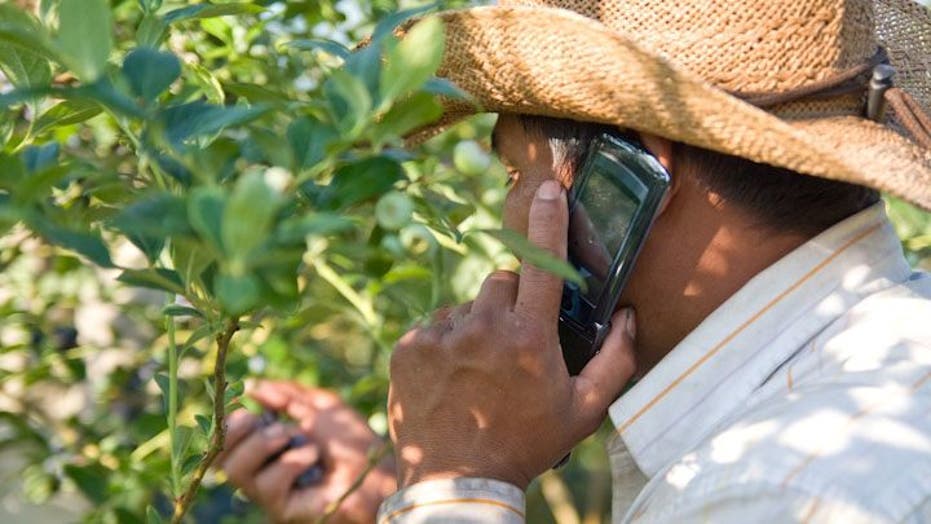A lot of research shows that Latinos, both in the U.S. and in Latin America, over-index for using mobile devices. But are they finding the information and services that they need?
The future growth of the Internet will come from low-income users, exactly the opposite of how the Internet began with professors and executives using it. In order to satisfy the new wave of mobile phone users, many of whom are disadvantaged, marketers need to bring new approaches in how to design mobile websites and services, even looking to Latin America for inspiration.
Latinos More Likely to Own Mobile Device
The Interactive Advertising Bureau’s recent report with BIGinsight, “Digital Hispanic Consumer” shows that when Hispanic consumers go online, they are more likely to do so via a mobile device: more Hispanics own an iPhone than the general population (27 percent vs. 20 percent), an Android (34 percent vs. 26 percent), or an iPad tablet (21 percent vs. 16 percent), according to the study. Yet, unsurprisingly, the IAB report finds that Hispanic users are less likely to own a desktop (40 percent) compared to general consumers (48 percent).
If we look at Mexico, the country-of-origin of most U.S. Hispanics, the percentage of mobile-only phone users is even more staggering. 40.9 million Mexicans have Internet access whereas there are 91 million mobile phones out of a total population of 112 million, according to the Mexico’s National Institute of Statistics, INEGI. With two times as many cell phones as Internet users in Mexico, most Mexicans first Internet experience will probably happen on a cell phone versus a laptop. Some countries in Latin America, like Brazil, actually have more cell phones that citizens according to Bradesco, one of the largest financial services companies in Brazil, which reports that Brazil has 224 million cell phones but a population of 194 million.
This past summer, I put together my own research project with the migrant farm worker advocate Peter Eversoll, the co-founder of the non-profit NC Field, which “empowers farmworkers through education and leadership development of their children.” We wanted to find out how low-income, migrant Spanish-preferring Latinos use cell phones, in part because their agricultural lifestyle parallels that of many Latin Americans.
Amazingly, we found out that these mainly poor Hispanics actually utilize smart phones more than what the IAB study indicates. Here’s what we found out:
- 94% of the respondents have a cell phone
- 53% have smart phones
- 46% share the cell phone with someone else
- 88% use pre-paid phones
- The most popular providers were those that have pre-paid plans (and don’t require a social security number) like Boost (34%), Cricket (14%), and US Cellular (28%)
- 50% have all-inclusive phones with calls, text messages and data
- 18% use the Facebook application on their phone
- 22% use Google applications on their phone
- 23% watch YouTube videos on their phone
- 86% do not have a home phone
- 88% do not have Internet access at home
- 65% do not use the Internet on shared computers (e.g. at a local school or library), meaning that their cell phone is their only access to the Internet
- Twice as many respondents use Facebook to keep in touch with family in their country of origin (19%) in comparison to email (10%) and instant messenger (8.5%)
At the same time, a few responses indicate that these Hispanics are not early adopters of Internet services like Skype or PayPal:
- Less than 1% use Skype to call their family in their country of origin (which is free between Skype members); whereas 42% still use phone cards to keep in touch with their family
- 79% send money to family in their country of origin; Of those, the majority (63%) send money via Western Union or MoneyGram while 16% transfer money from a bank account. None used services like PayPal or Xoom.
Leylha Ahuile, the Multicultural Analyst for Mintel International says, “These results make sense because if you have a limited budget, a smart phone helps you avoid spending money on a home Internet connection and instead utilize one on-the-go device. In addition, since Hispanics are younger than the overall population, they tend to go online more often simply because they are part of the younger generation and grew up with digital media.”
Many Features for Low Cost
“Being price sensitive isn’t unique to Hispanics. It’s also true among students, for example,” says Dr. Felipe Korzenny, the Director of the Center for Hispanic Marketing Communication at Florida State University. “People who have a limited budget often times choose a smartphone because it offers a number of features in one device for a low cost.
In addition, people who are less affluent oftentimes have a more mobile lifestyle. As a result, mobile phones work well for them. Pre-paid phone plans also appeal to cost-conscious, low-income customers because they can track what they spend. Overall, the research that we have done at FSU shows that Hispanics, Asians, and Blacks all use cell phones about twice as much as non-Hispanic whites.”
Korzenny goes on to describe mobile phones as “technologies of liberation” because people who have been deprived of these technologies become free to do business or partake in activities that they could not do before. This can significantly change the economies of rural villages where farmers can skip the middleman and make more money selling directly to the end buyer.
As an extreme example of the importance of cell phone service among the poor, The Economist recently reported that researchers in Kenya have found that poor cell phone users “would, for instance, forgo meat at meal time, in the hope of making a call or sending an SMS that would enable them to put more food on the table later” (Vital for the Poor, Nov 10, 2012).
New Mobile Services for Latinos
Taking into account this consumer behavior, a handful of companies have developed new services for low-income mobile phone users.
In North Carolina, David Iberkleid started “Pase La Voz,” Spanish for “spread the word,” in 2011 to provide Hispanics with news via text messages on weather, jobs, emergencies as well as English vocabulary. Today, over 107,000 users now belong to the mobile community, which has evolved into providing members with alerts about police and immigration checkpoints. Iberkleid, originally from Bolivia, created the parent company of “Pase La Voz,” WhyEquals, to “design digital experiences that help communities gain equal participation in digital media.” Its website describes a future where “equal participation in digital media will bring economic prosperity and fair policy to these communities.”
The Occupational Safety and Health Administration (OSHA), part of the U.S. Department of Labor, created a Heat Safety Tool in Spanish for Hispanics. Its mobile application allows workers and supervisors to calculate a heat index for their worksite and displays a risk level that corresponds to the weather and location. Users can also get reminders about protective measures that should be taken at certain risk levels to prevent heat-related illnesses such as reminders about drinking enough fluids, scheduling rest breaks, planning for and knowing what to do in an emergency, training on heat illness signs and symptoms, and monitoring each other for signs and symptoms of heat-related illness.
In Mexico, Banamex, Citibank’s division in Mexico, launched “Transfer,” a service designed for the “unbanked” that enables mobile payments, transfers, cash withdrawals, and balance inquiries via SMS text messages, all without a debit card. Transfer created an opportunity for an estimated 66 million Mexicans who already have a cell phone, but don’t have a bank account, to access financial services and banking transactions, that were previously unavailable to them. The new service became successful for two reasons. One, Banamex made it easier for the unbanked to sign up for an account by reducing the amount of information that was needed to do so. They did this by partnering with Telcel, the largest cellphone provider in Mexican, where each customer’s cell phone number becomes their Transfer account number. Two, Banamex developed a strong word-of-mouth strategy where Transfer paid clients $20 Pesos for each friend that signed up for a new account. Transfer’s Facebook page became popular because of a feature that allowed users to gauge the amount that they could earn in incentives by encouraging friends to sign up.
And lastly, in Brazil, PagPop has developed a device that connects to smartphones and turns them into credit card payment platforms, similar to Square in the U.S. Cleaning ladies and gardeners, for example, can use their cell phones with the PagPop device (as seen in the photo below) to swipe their clients’ credit card to receive a payment for their services.
Many U.S. Hispanic and Latin American cell phone users are more likely to be “unbanked,” or not have a bank account. Latin Trade Magazine recently estimated that up to 70 percent of the Latin American and Caribbean population, or 400 million people, across the region do not have a bank account. Still, we know that the future of financial transactions will involve less cash and move towards “virtual” or credit card transactions. With this in mind, products like Banamex’s Transfer could have a huge impact on the financial services industry and especially money transfers from the U.S. to Mexico, which brought in over $21 billion USD to Mexico (INEGI, Mexico at a Glance 2011).
“Marketers may be ignoring certain parts of the population because whites are more profitable today, says Dr. Korzenny. “That creates a gap in strategic thinking. Emerging minorities [in the U.S.] adopt mobile phones more aggressively and so these audiences will become much more profitable and important in the future.”
Mobile platforms (websites, applications, and SMS services) need to be designed more simply and visually to accommodate a much larger and on-the-go audience, yet one that may read at a lower level and have no experience visiting PC-oriented websites.









































